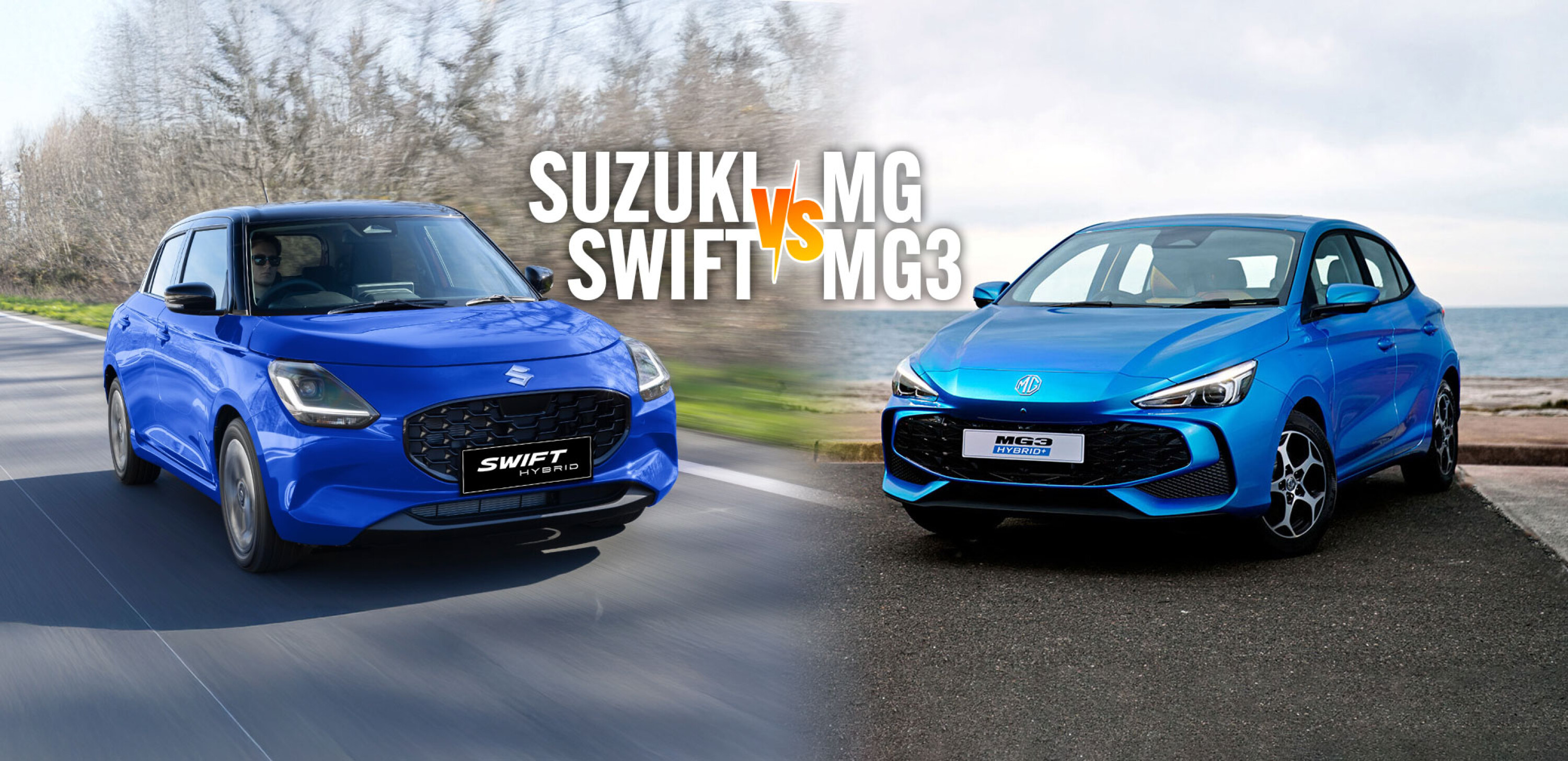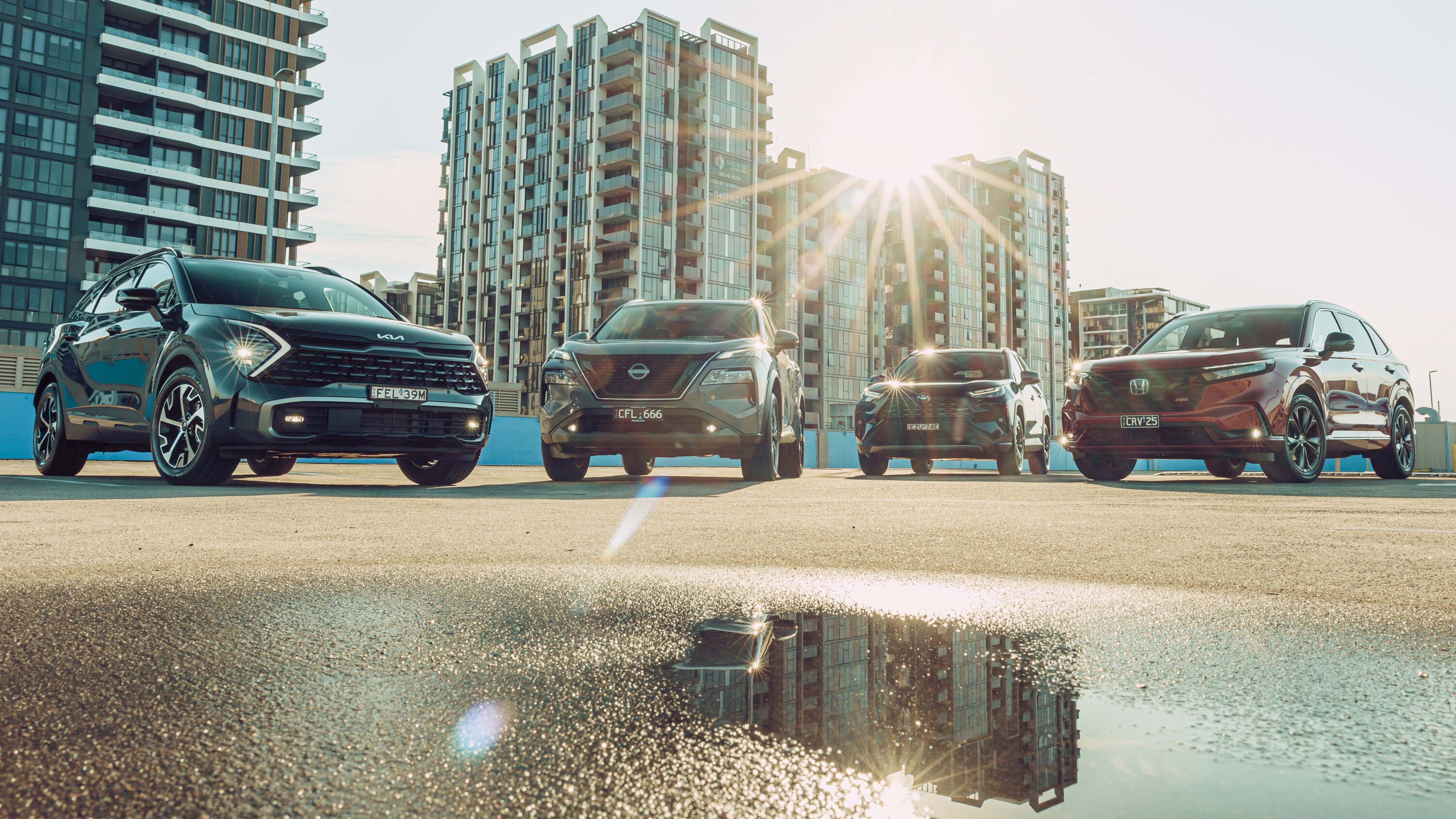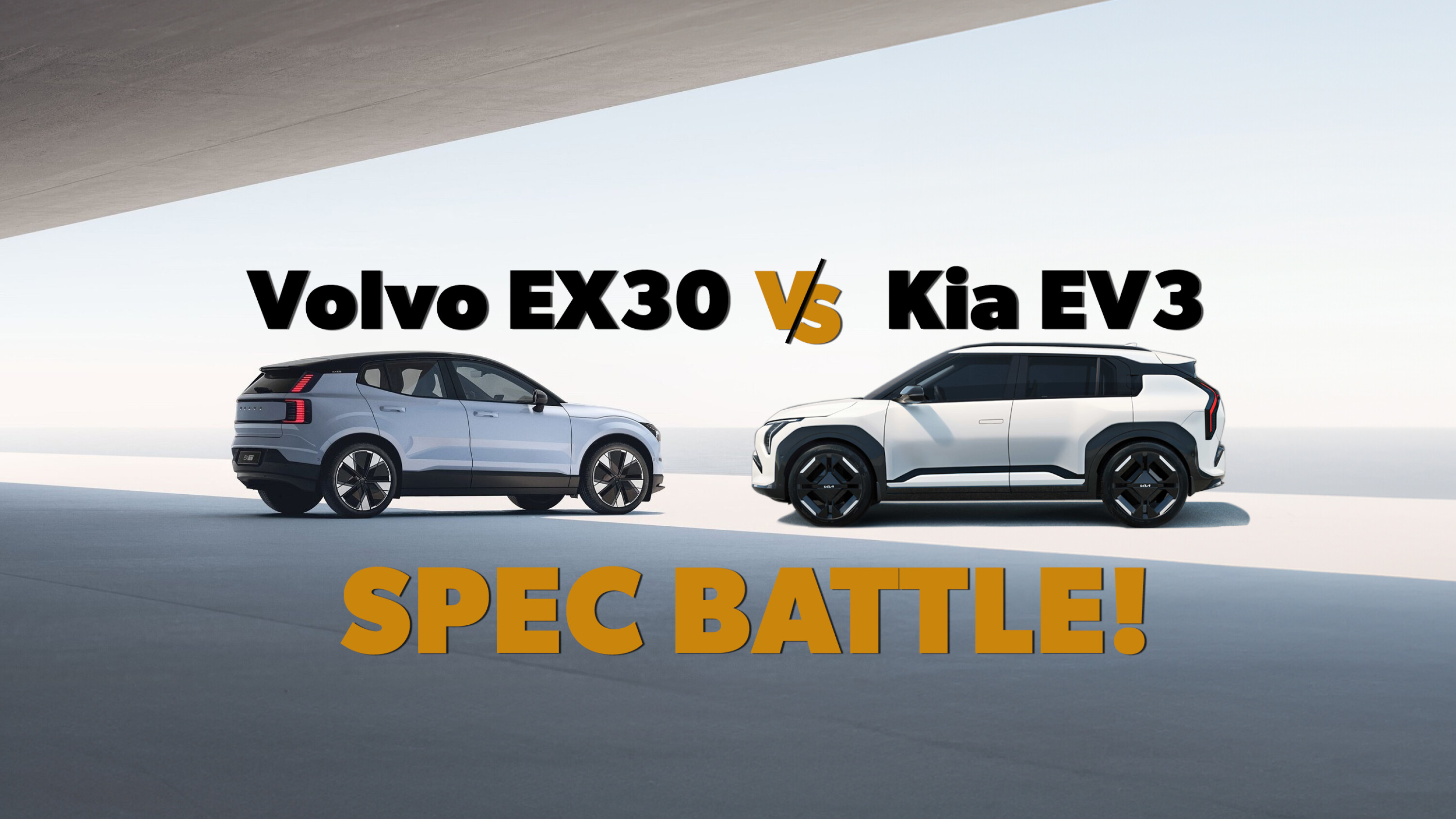AT LAST, the medium SUV tide appears to be turning.
What was once a motley collection of automotive mediocrity, populating the periphery of mainstream transport taste, has become a new-wave charge towards becoming the total family-car package.
Don’t want your SUV to look like a shed? Check out Peugeot’s sleek new 3008, with a designer interior that’s polished enough to back up its concept car-inspired exterior – a look that utterly rejects its bloated and boring MPV predecessor. And if it’s imposing real estate you’re after, then Honda, Nissan and Holden still know how to dress-up a contemporary four-wheeled McMansion with all the mod-cons that bring families to the yard.
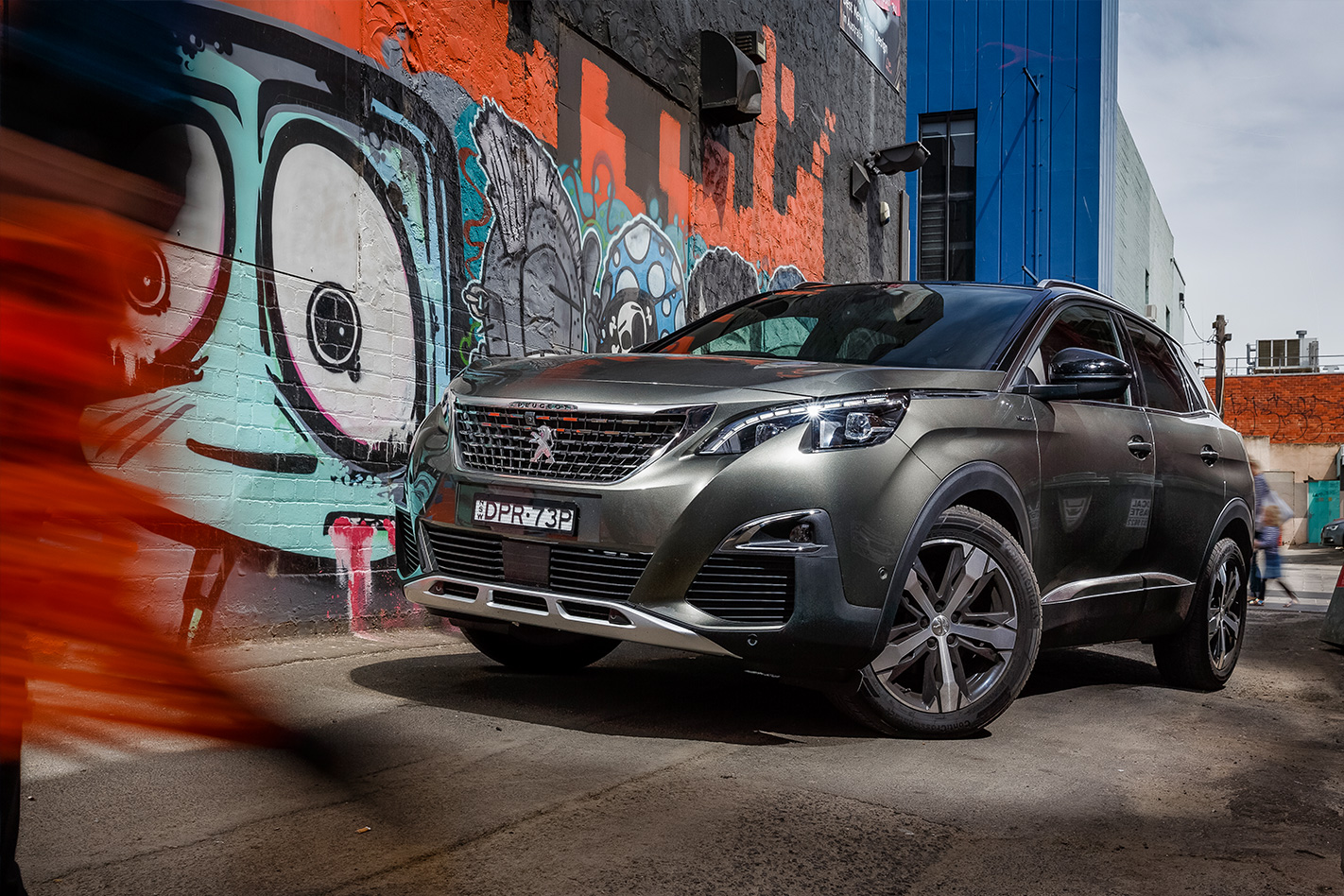
In one crucial aspect, it definitely has. Instead of ‘front-drive, early $30s’, here we have a $45K price point, mid-to-top trim levels, petrol engines and all-wheel drive on everything except the front-drive-only Peugeot. That sees Honda’s flagship CR-V VTi-LX ($44,290) and Nissan’s primo X-Trail Ti ($44,790) competing alongside the not-quite-pinnacle Mazda CX-5 GT ($44,290), Volkswagen Tiguan 132TSI Adventure ($43,990), Peugeot 3008 GT-Line ($43,490) and Holden’s second-from-top Equinox LTZ AWD, wearing the same $44,290 sticker as its Honda and Mazda rivals.
In its home market (the USA), the Chevrolet-badged Equinox is a sizeable hit, with a sales record of close to 300,000 units expected this year. Holden’s ambitions for its Australian-tuned version of GM’s Mexican-built SUV are much more modest, but you can rightfully expect the Equinox to occupy the upper echelon of Holden’s sales charts, providing the stigma of the decrepit Captiva doesn’t undermine its talents.
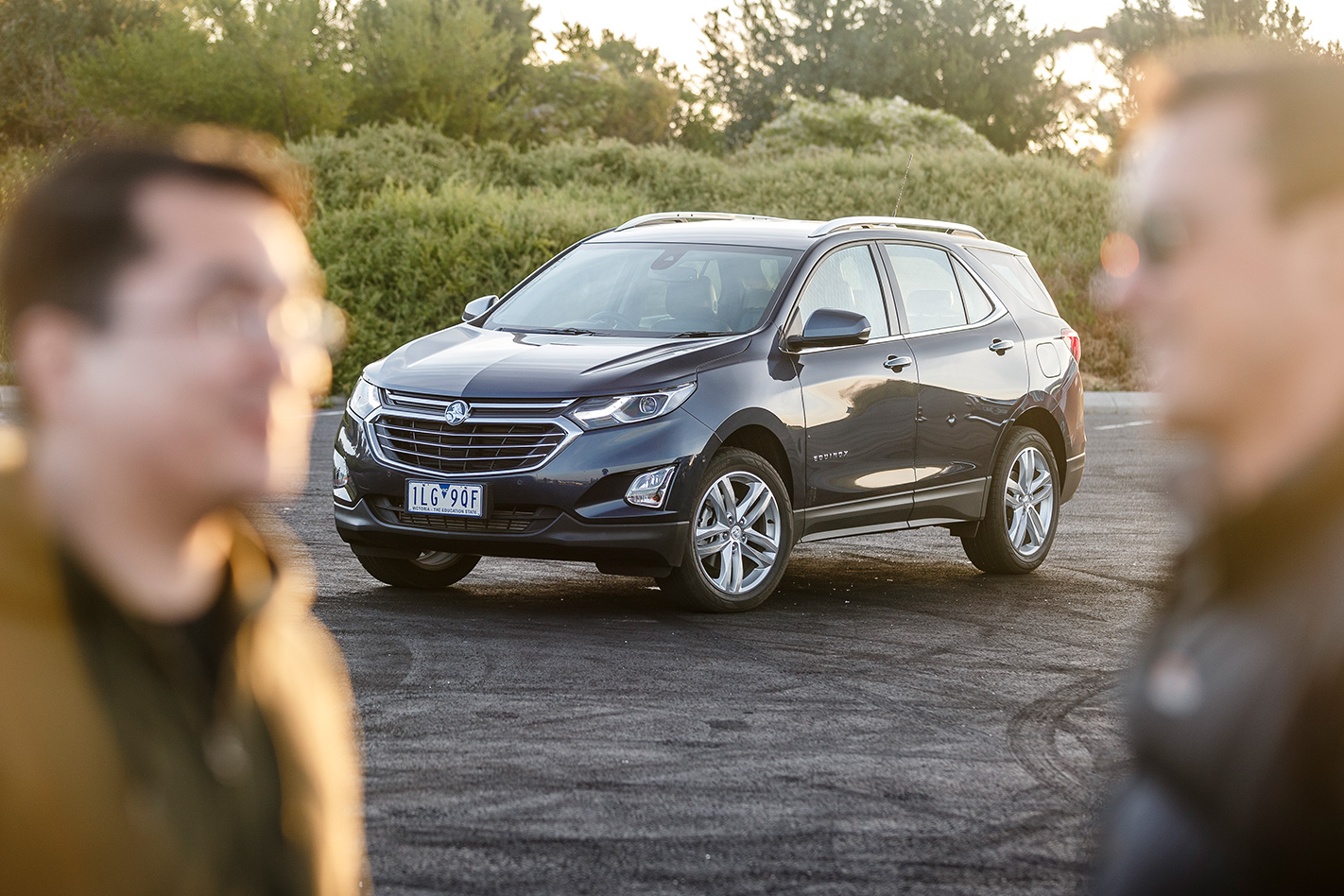
Packing the next-gen Commodore’s strong and silky 2.0-litre turbo-petrol four with a class-belting 188kW/353Nm and nine-speed automatic transmission, there’s fat chance in hell of any other non-sporting medium SUV keeping pace with the rapid Equinox, with the possible exception of Ford’s thrusty 178kW Escape.
A last-minute issue with our testing venue meant we had to abandon performance testing but it’s safe to say that Holden’s 7.3sec 0-100km/h claim for the 2.0-litre Equinox might actually be a little on the conservative side. Yep, she’s a bolter, as the excellent 109kW per tonne power-to-weight figure suggests. The Tiguan is no slug either.
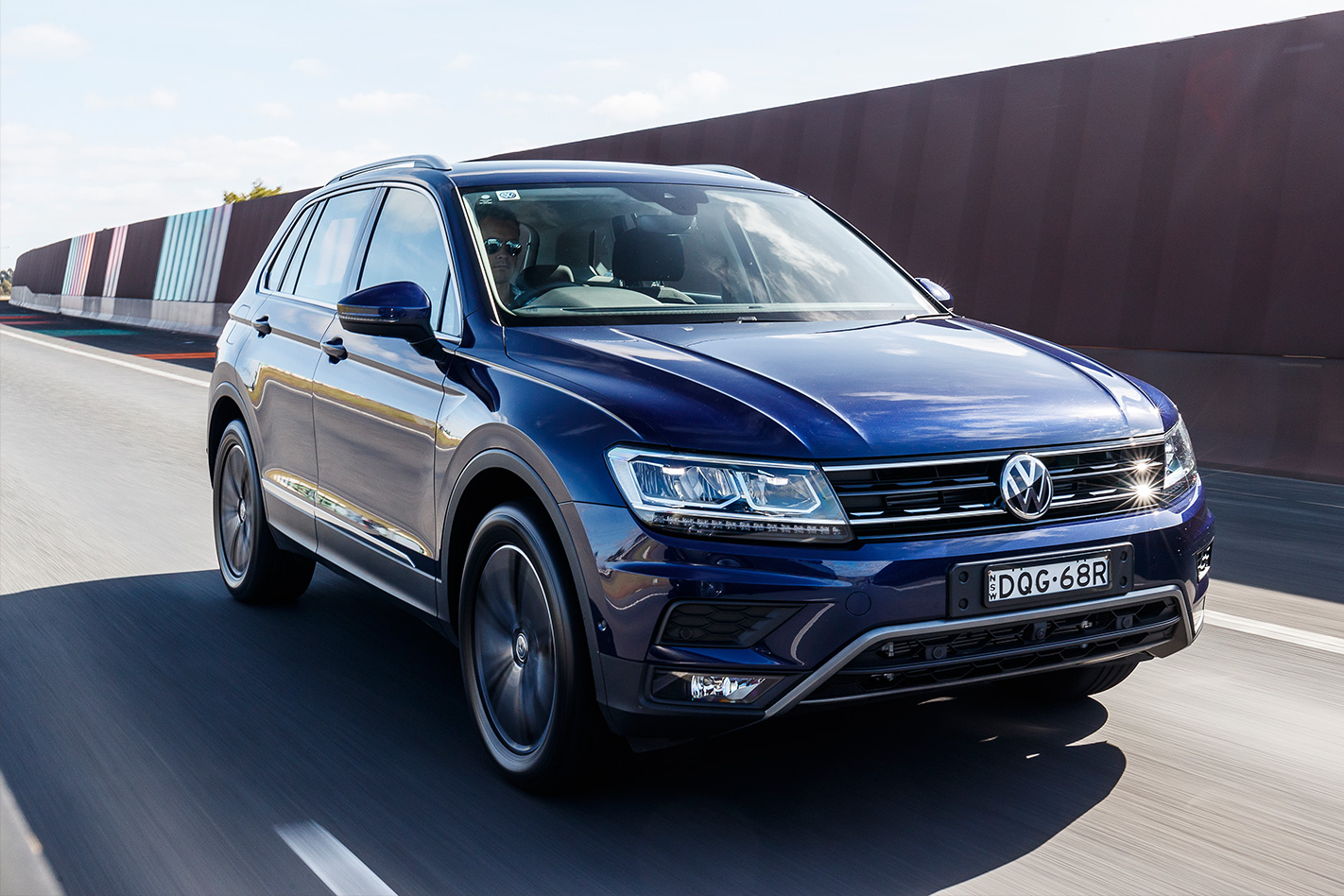
Despite Volkswagen’s tip-shift gate being arse-about (in our opinion), any arrangement is preferable to the Equinox’s appallingly unintuitive +/– switch mounted on top of its gearlever. Not only does your elbow fight for room with the overly tall centre console armrest, but the lever needs to be in ‘L’ for the tip-shift to work, and then it holds gears at the 7000rpm rev cut-out, despite the nine-speed ’box packing ratios tighter than a flea’s intestines. And what may feel like hidden shift paddles on the back of the Equinox’s tactile steering-wheel spokes are actually volume and audio controls.
The straightforward CX-5 ignores all that finicky nonsense by nailing the basics – great steering wheel with shift paddles, a traditional six-speed auto with a highly effective (though sometimes over-eager) Sport mode, and a tip-shift configured in our preferred direction (forward for a downshift, back for an upshift).
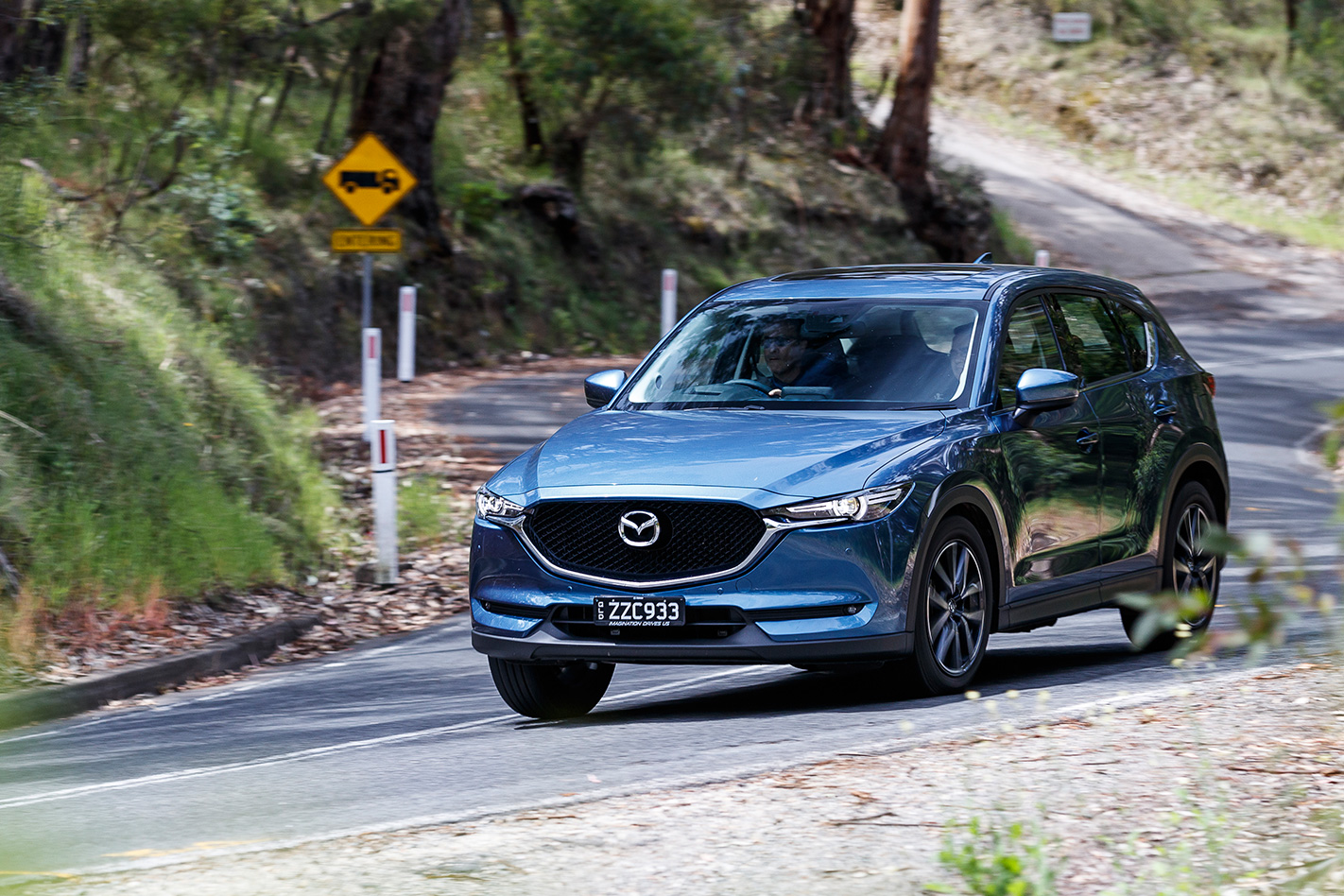
The new-gen CR-V takes a very different approach to achieving a similar end. Flat stick, there isn’t much between them, but the Honda is at its best when serenely surfing its vast torque band (240Nm from 2000-5000rpm), not raucously pinning its tacho needle at 6000rpm. Despite the 1.5 turbo’s stout performance (0-100km/h in 8.0sec) and a clear economy victory (10.8L/100km on test), this is a drivetrain that delivers its best when readily hauling bodies and cargo. What the engine brings in outright grunt, the CVT does diminish in dissatisfaction somewhat.
Peugeot’s impressively lithe 3008 almost matches the CR-V for economy, and while the French SUV’s performance claim (9.9sec to 100km/h) may appear slightly insipid, the reality is significantly more than that. The 3008 GT-Line features by far the sweetest iteration of Peugeot’s ageing ‘Prince’ 1.6-litre turbo-petrol four, and in unison with a superb Aisin six-speed automatic and sizeable fixed shift paddles, there’s a verve to the 3008’s demeanour that sits perfectly with its shapely form and sharp, yet supple dynamics.
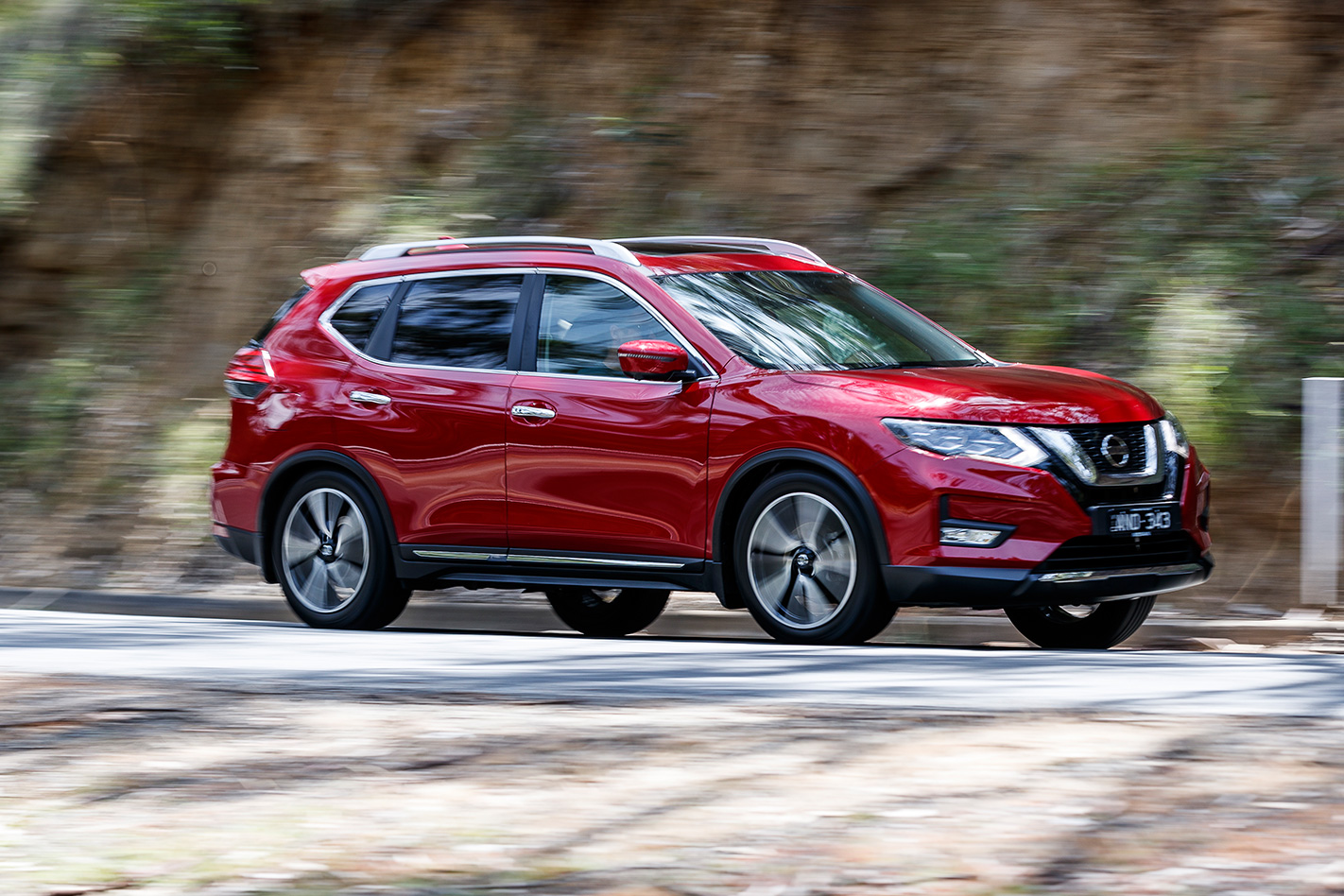
Dynamically, the Nissan is closer to the mark, proving sharper at the helm than the last X-Trail we drove (in 2014) and less cumbersome than its under-the-skin Renault Koleos relative. But there’s a disconnect to the X-Trail Ti that doesn’t quite sit right. While its 225/55R19 tyres prove advantageous for turn-in response and mid-corner grip, they’re perhaps a step too far in terms of where the X-Trail’s essence is, and what it’s trying to be. Even then, the 19-inch-wheeled X-Trail understeers a bit, squeals its tyres a bit, trips up and will kiss its bump stops over protrusions that don’t faze its rivals. The Nissan is no complete numpty, but it never feels like it’s enjoying itself.
For handling, ride and driver enjoyment, the CR-V is a big step up from the X-Trail. It’s neither as precise as the CX-5 or as supple as the 3008, yet it manages to blend elements of both, most satisfyingly in the way its multi-link rear end plays a significant part in pointing its nose into a corner. But the Honda’s steering isn’t in the same league as its chassis smarts. It’s slow to turn in, feels reluctant and detached, and fails to channel the keenness of a Civic, even in CR-V’s preferred fast sweepers. And while the ride is generally quite pliant, it could be better controlled over rippled surfaces, and there’s more tyre and wind noise than expected.
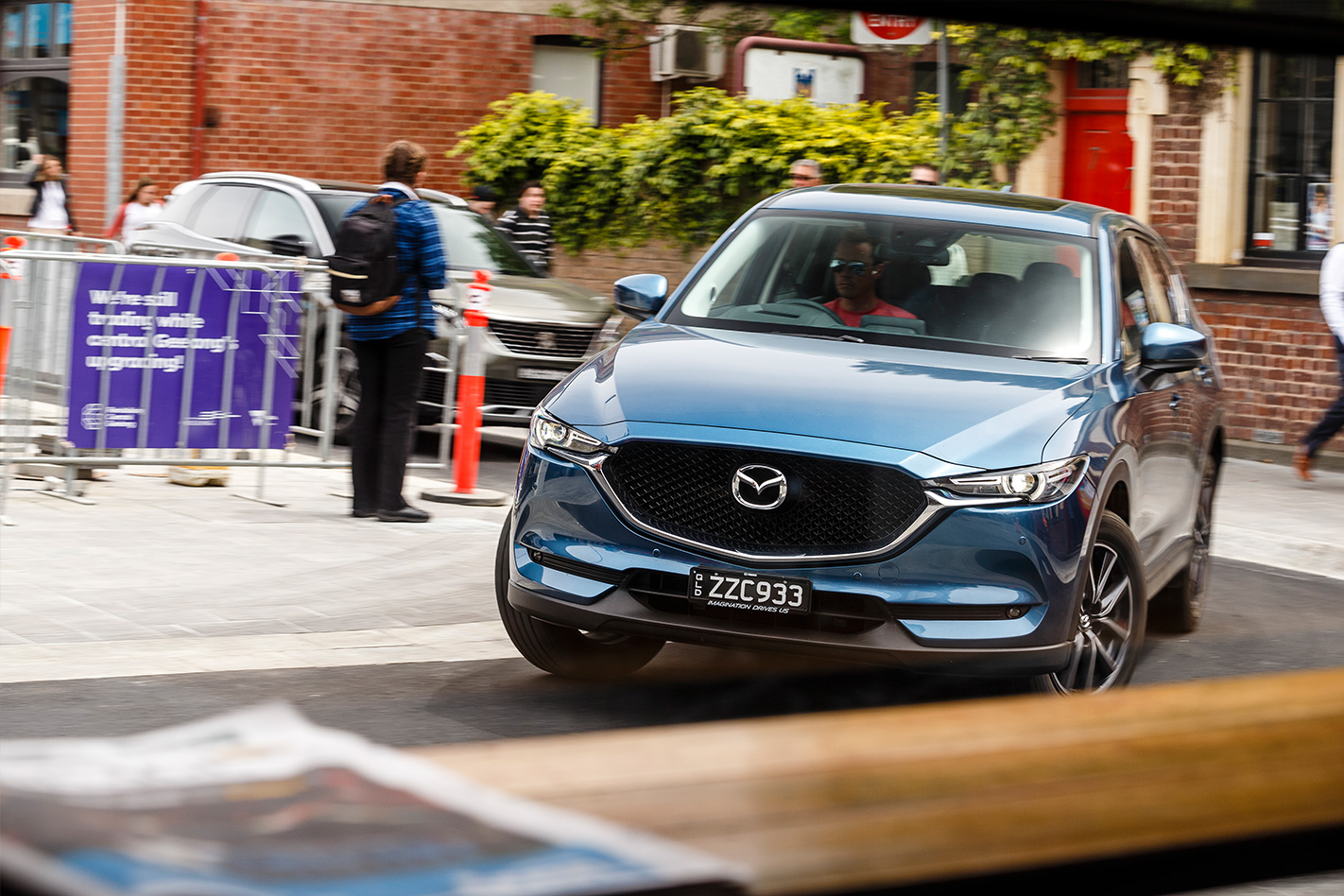
The reality, of course, is the opposite, but it all depends on how capable you are as a driver and how hard you’re willing to push your CX-5. The Peugeot also loves a challenge. As soon as you start to enthusiastically change direction in the 3008, or lift the throttle in tightening-radius corners, it responds with traditional front-drive French adjustability. It feels lower, more agile and sportier to drive than how you sit in it, because you do sit quite high. But in terms of working with its driver, adding some involvement and getting its power down, which it does impressively well, the 3008 is this group’s entertainer.
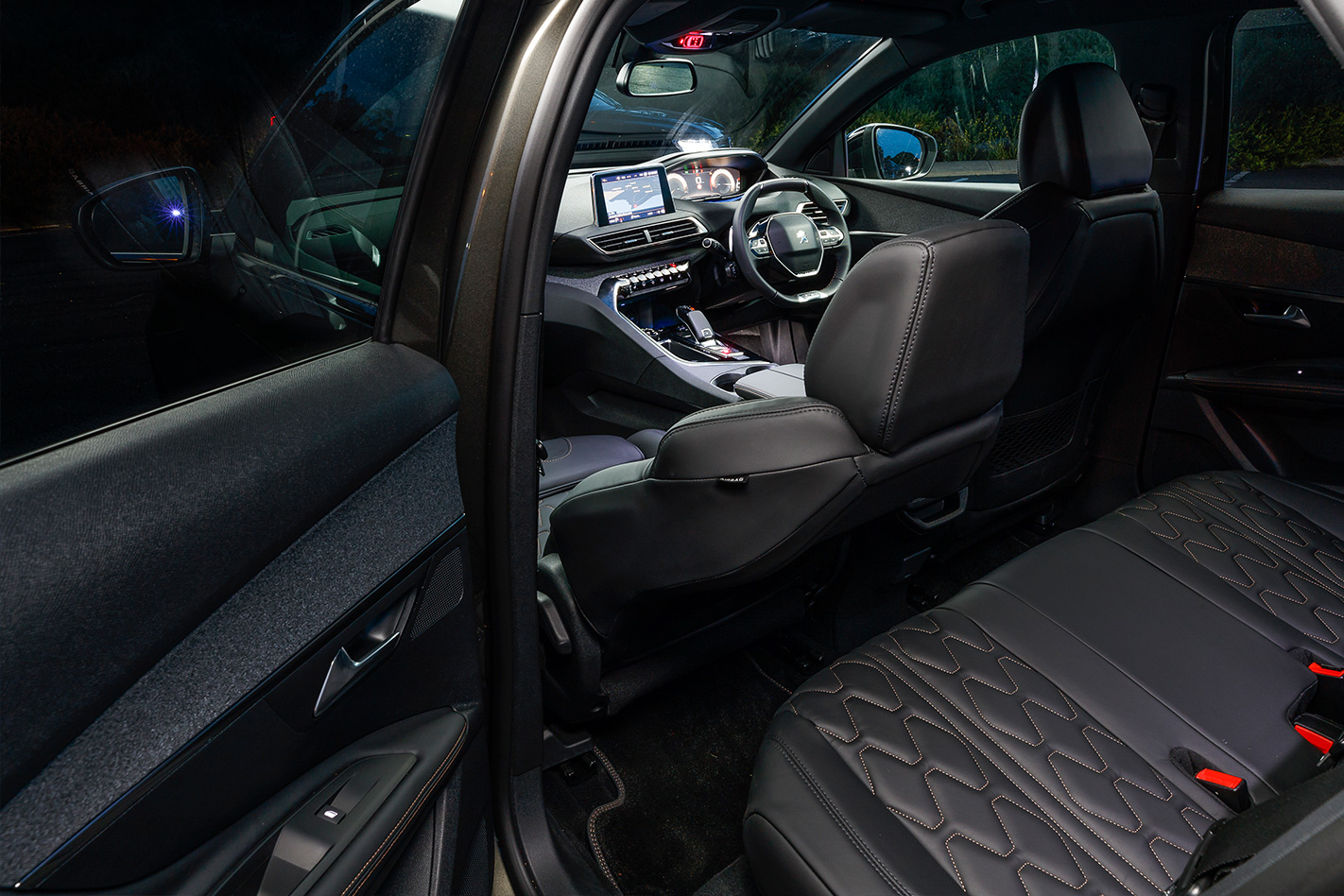
The Equinox is essentially the polar opposite of the 3008, yet it too feels balanced, grippy and adjustable. Holden’s chassis engineers have done some serious work to this car’s underpinnings and the result is quite remarkable given its size and its 300kg-plus weight penalty over the sprightly Pug. Given the Equinox’s considerable power, you do need to have the small ‘AWD’ button depressed (sited towards the front of the centre console), but when all four wheels are working, it punches out of bends with authority. Or slightly wayward torque steer if you’re in front-drive mode.
Guided by a beautifully tactile wheel, the Equinox’s steering is consistently weighted and pointy, making it a confidence-inspiring car to drive on any kind of road. Backed by a sound driving position, good vision, the best-judged ride quality and the tautest body control here, you can trace a line in the Holden that you have no hope of connecting with in the Nissan, making it something of a driver’s SUV. Yet the Equinox’s hugely flawed central control interface detracts from the experience, and should simply be burnt at the stake. If only it had the world’s greatest centre armrest design, as per the Volkswagen Tiguan.
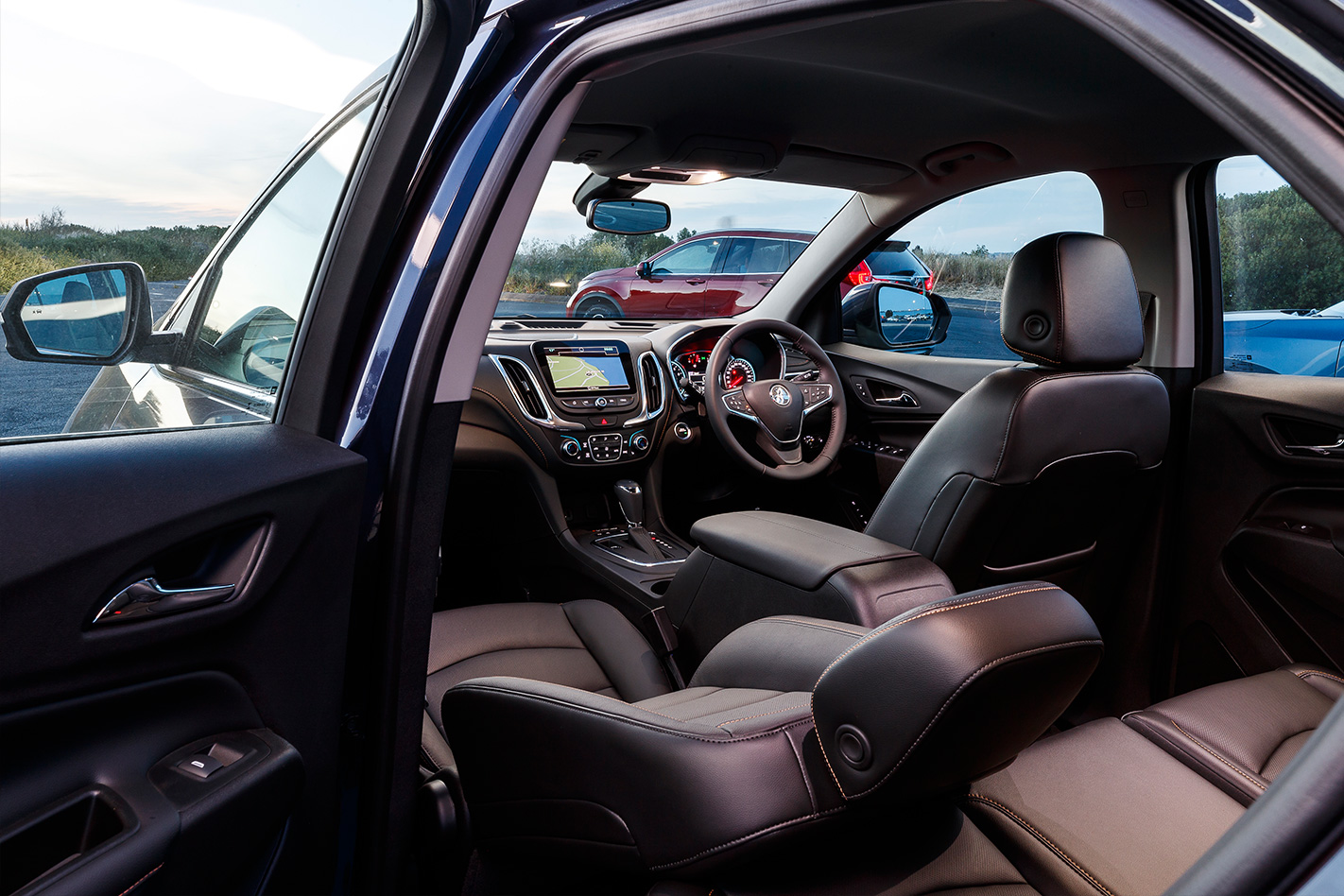
In terms of ride, Tiguan brings fine body control, if a little too much fidget and head toss compared to the more loping and absorbent 3008. Much like the Golf VII it’s based on, the Tiguan does tend to lose some dynamic interest the harder you push it but that’s entirely in keeping with the medium SUV zeitgeist. While it fails to hit the highs of some of its rivals, the VW blends elements of greatness together, making it a consummate all-rounder.
Same goes for its interior. The Tiguan feels like it was designed from the inside out, such is the consistency of its attention to detail, and the supreme utility of its packaging. About the only aesthetic aspect we can fault is the Tonka-esque heavy handedness of its dash and door detailing.
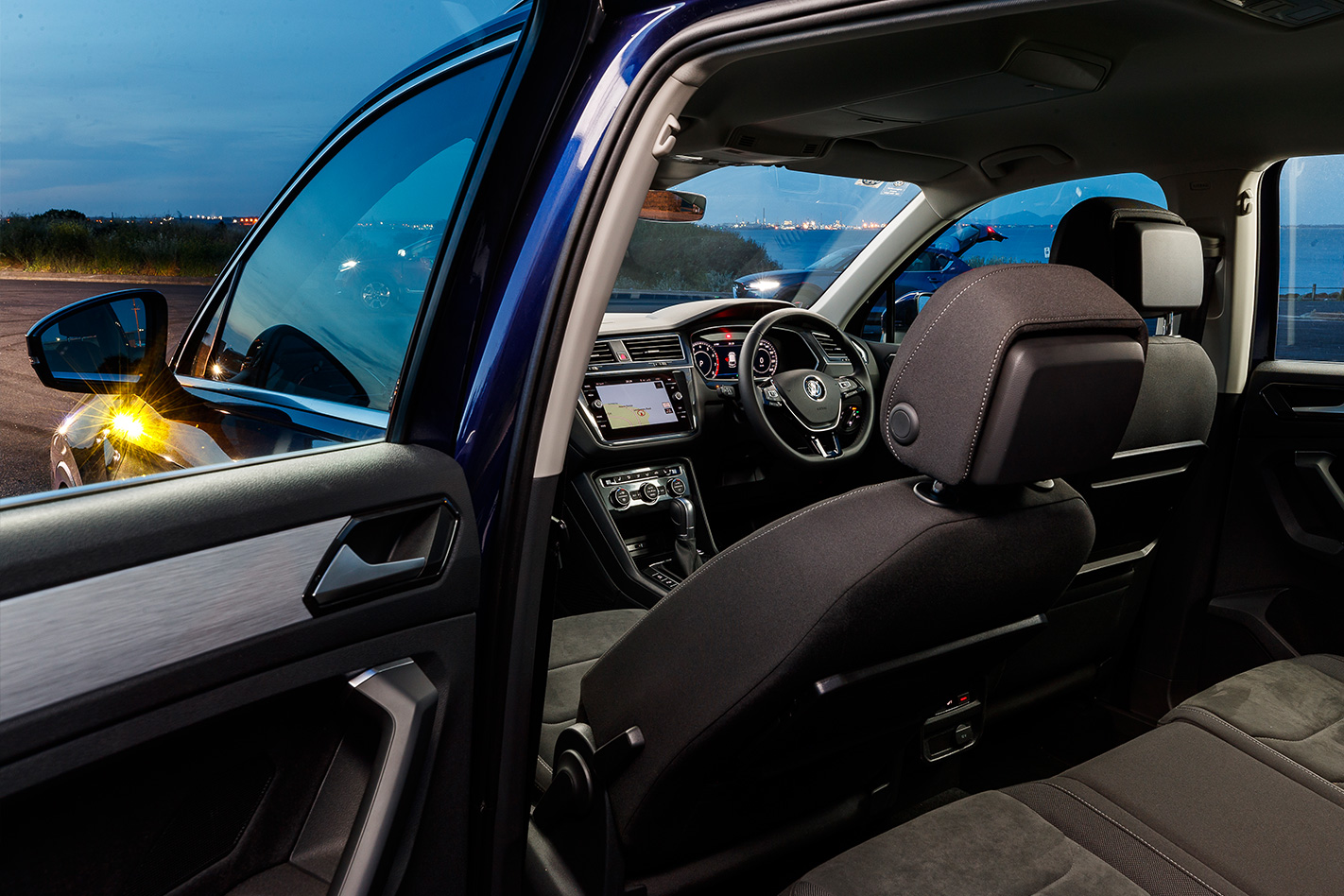
The Bose-kitted Equinox LTZ also sounds the business, though the Holden stumbles when you start to look beyond the basics. Its driving position, seat comfort, equipment and space are unquestioned, but when you peer below the cabin’s tide line, you could be inside a Chevy truck.
The X-Trail doesn’t fare too well under the interior microscope either. Unlike its Japanese rivals – each of which have a unity to their look, their packaging comfort and their quality of finish – the Nissan feels bitsy. All the room and theatre-style rear seat vision in the world can’t save the X-Trail from feeling rather second-rate.
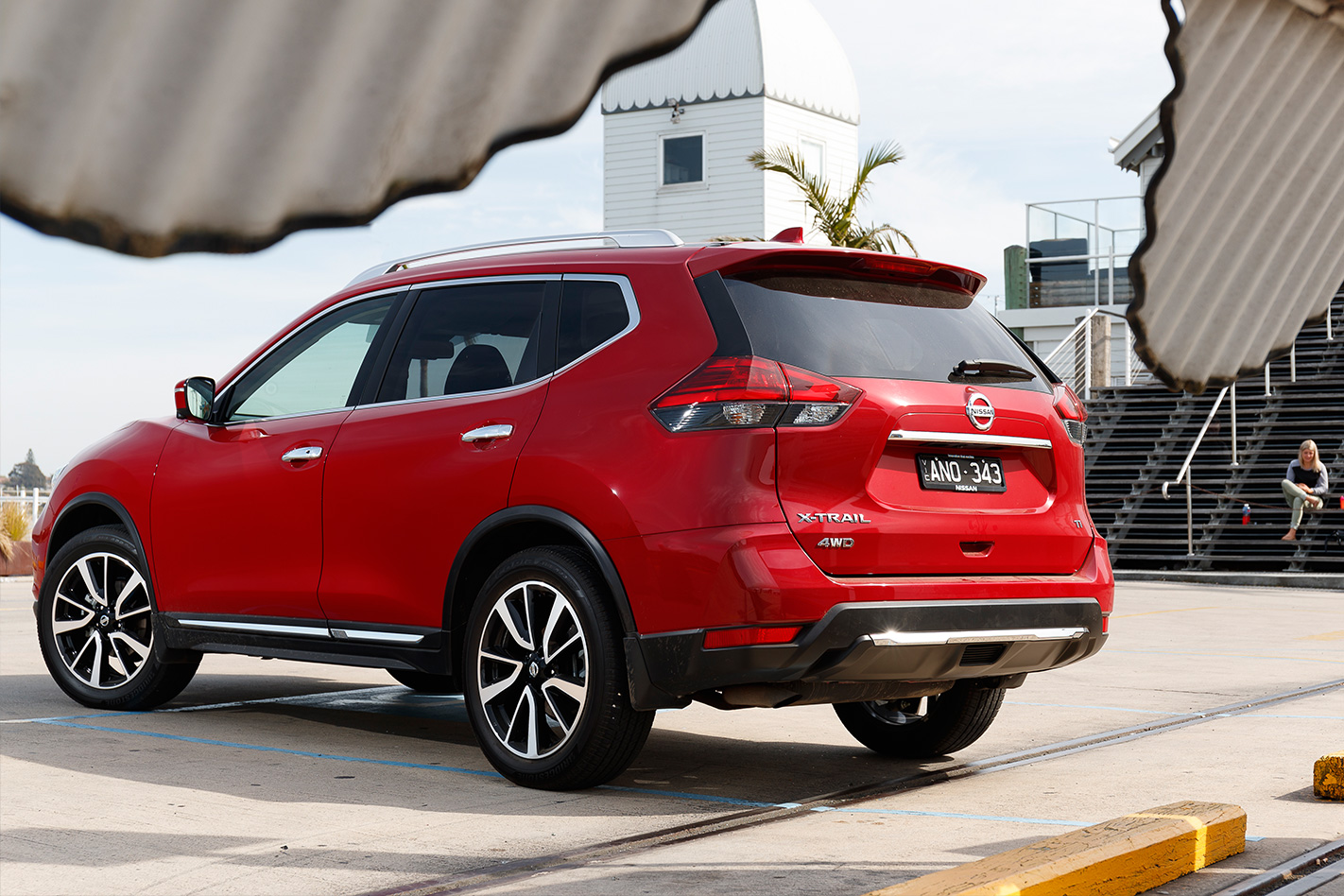
A step up to the Equinox LTZ AWD brings vastly more performance, far superior dynamic ability, and greater interior comfort than the X-Trail, making it a potential winner. But there’s something oddly indifferent about the Equinox. Inside, it’s equal parts excellent and eyebrow-raising. Styling wise, it probably leans more towards the latter, but for so many families, the Equinox’s persuasive equipment content will be what tips them over the line.
Aesthetes and badge snobs, however, are better off in a CR-V. It can’t match the Holden’s grunt, its five-seat comfort or its dynamic polish, but the Honda’s design consistency, its superior build quality, its greater cohesiveness and its class-leading efficiency make it the medium SUV we’d prefer to see in our driveway.
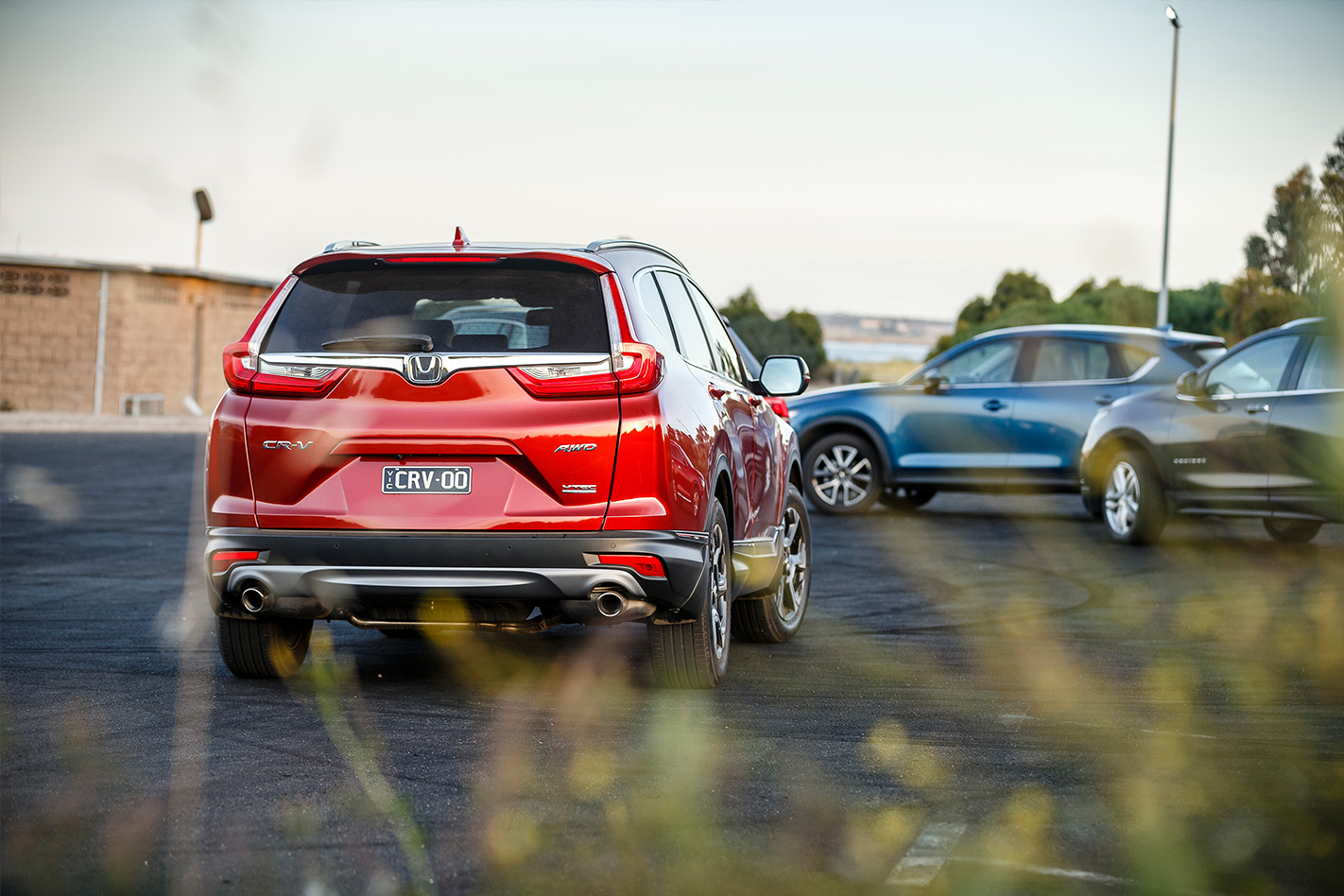
That’s where the Peugeot 3008 steps in. Not only does it look brilliant, inside and out, it drives with a vitality that grows on you the more time you spend with it. Brisk, frugal, beautifully trimmed and impressively comfortable, where the 3008 ultimately loses out is in terms of all-round utility. Alongside the voluminous Tiguan, the Pug is more of an expanded hatch than a true wagon-oid.
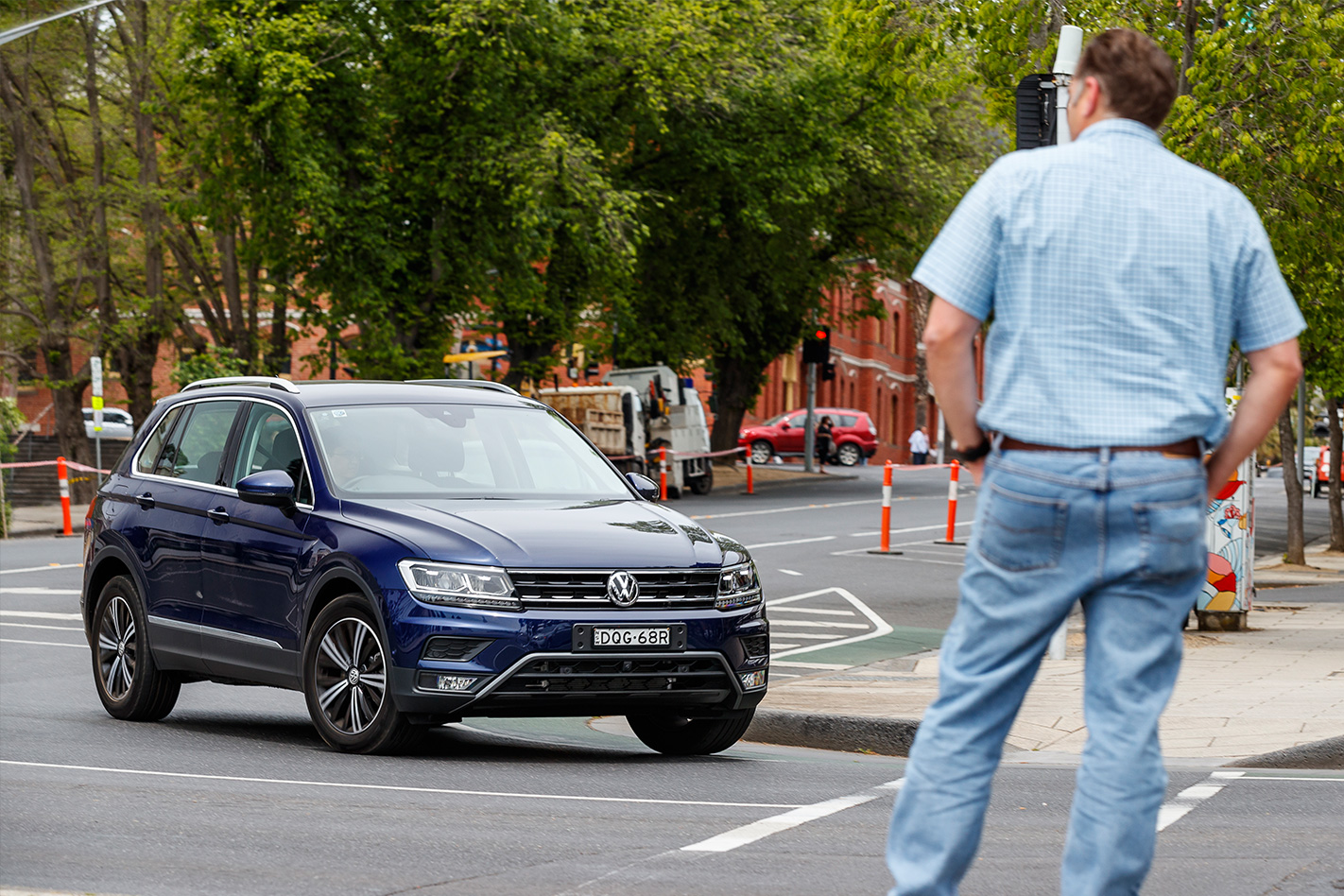
And while it may not deliver the design delights of the Peugeot, the Tiguan serves as concrete proof that, finally, the mainstream medium-SUV class has what it takes to make pricier European alternatives appear excessively indulgent.



